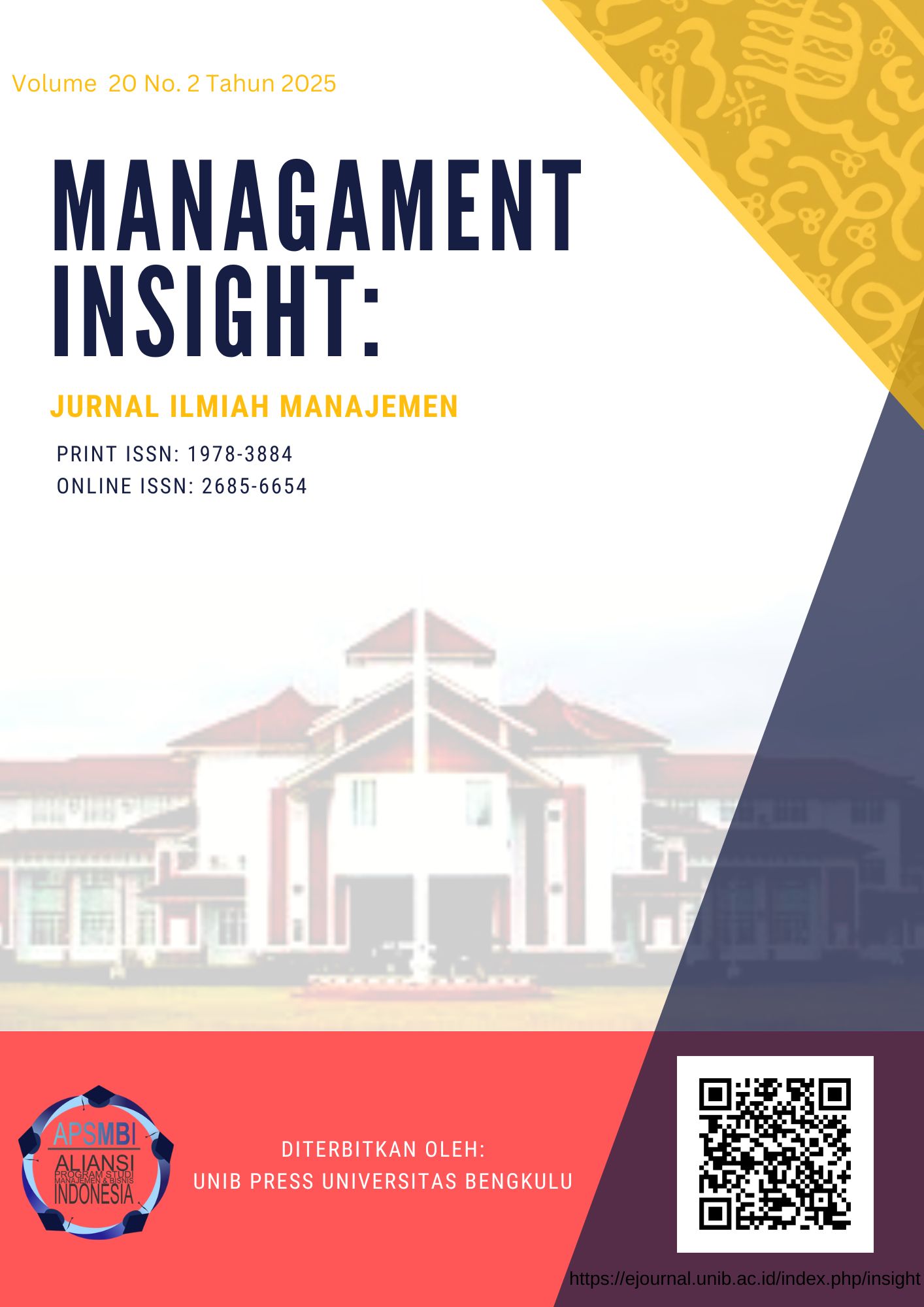Main Article Content
Abstract
The use of cashless payment systems continues to increase in line with developments in technology, information and digital communications. This study examines the main determinants of e-wallet use intention and proposes a model of e-wallet adoption, integrating mindfulness as a significant factor. The respondents in this study are e-wallet users living in Bengkulu City aged 17-40 years old. The non-probability sampling technique was used to obtain data samples from respondents. Online survey questionnaires collected respondents of this study through social media such as WhatsApp and Instagram. After adopting the listwise deletion method through Mahalanobis Distance on SEM-AMOS, 257 useable questionnaires were available for analysis. For data analysis, Confirmatory Factor Analysis (CFA), assessment of normality, and regression weights were applied to this research. The result indicates that (1) mindfulness has a positive and significant effect on perceived usefulness; (2) mindfulness has a positive and significant effect on perceived ease to use; (3) perceived usefulness has a positive and significant effect on the intention to use; (4) perceived ease to use has no significant effect on the intention to use; and (5) intention to use has a positive and significant effect on actual use.
Keywords: E-wallet, Mindfulness, Perceived Usefulness, Perceived Ease to use, Intention to Use, Actual Use, TAM
Article Details
Copyright (c) 2025 Sekar Ayu Purbondaru

This work is licensed under a Creative Commons Attribution-ShareAlike 4.0 International License.
Please find the rights and licenses in Managament Insight: Jurnal Ilmiah Manajemen.
1. License
The use of the article will be governed by the Creative Commons Attribution license as currently displayed on Creative Commons Attribution-ShareAlike 4.0 International License.
2. Author’s Warranties
The author warrants that the article is original, written by stated author(s), has not been published before, contains no unlawful statements, does not infringe the rights of others, is subject to copyright that is vested exclusively in the author and free of any third party rights, and that any necessary written permissions to quote from other sources have been obtained by the author(s).
3. User Rights
Managament Insight: Jurnal Ilmiah Manajemen spirit is to disseminate articles published are as free as possible. Under the Creative Commons license, Managament Insight permits users to copy, distribute, display, and perform the work for commercial purposes only. Users will also need to attribute authors and Managament Insight on distributing works in the journal.
4. Rights of Authors
Authors retain the following rights:
Copyright, and other proprietary rights relating to the article, such as patent rights, The right to use the substance of the article in future own works, including lectures and books, The right to reproduce the article for own purposes, The right to self-archive the article, the right to enter into separate, additional contractual arrangements for the non-exclusive distribution of the article's published version (e.g., post it to an institutional repository or publish it in a book), with an acknowledgement of its initial publication in this journal (Managament Insight: Jurnal Ilmiah Manajemen).
5. Co-Authorship
If the article was jointly prepared by other authors, the signatory of this form warrants that he/she has been authorized by all co-authors to sign this agreement on their behalf, and agrees to inform his/her co-authors of the terms of this agreement.
6. Termination
This agreement can be terminated by the author or Managament Insight: Jurnal Ilmiah Manajemen upon two months’ notice where the other party has materially breached this agreement and failed to remedy such breach within a month of being given the terminating party’s notice requesting such breach to be remedied. No breach or violation of this agreement will cause this agreement or any license granted in it to terminate automatically or affect the definition of Managament Insight: Jurnal Ilmiah Manajemen.
7. Royalties
This agreement entitles the author to no royalties or other fees. To such extent as legally permissible, the author waives his or her right to collect royalties relative to the article in respect of any use of the article by Managament Insight: Jurnal Ilmiah Manajemen or its sublicensee.
8. Miscellaneous
Managament Insight: Jurnal Ilmiah Manajemen will publish the article (or have it published) in the journal if the article’s editorial process is successfully completed and Managament Insight or its sublicensee has become obligated to have the article published. Managament Insight may confirm the article to a style of punctuation, spelling, capitalization, referencing and usage that it deems appropriate. The author acknowledges that the article may be published so that it will be publicly accessible and such access will be free of charge for the readers.
